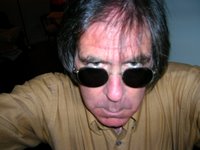May 31
 On the 31st in 1669, inveterate gossip Samuel Pepys reluctantly announced that he would no longer write in his diary. He cited poor eyesight as his reason for stopping but I think he simply got tired of people sending him notes saying “Sorry, not for us at this time, good luck elsewhere.”
On the 31st in 1669, inveterate gossip Samuel Pepys reluctantly announced that he would no longer write in his diary. He cited poor eyesight as his reason for stopping but I think he simply got tired of people sending him notes saying “Sorry, not for us at this time, good luck elsewhere.”Pepys would continue maintaining his 17th century version of People magazine, or National Enquirer if you prefer, but would do so with the aid of scribes. At the end of his last entry, he also had the decency to say goodbye as well as offer an apology for his having to censor his work: “And thus ends all that I doubt I shall ever be able to do with my own eyes in the keeping of my journal, I being not able to do it any longer, having done now so long as to undo my eyes almost every time that I take a pen in my hand; and, therefore, whatever comes of it, I must forbear: and, therefore, resolve, from this time forward, to have it kept by my people in long-hand, and must therefore be contented to set down no more than is fit for them and all the world to know; or, if there be any thing, which cannot be much, now my amours to Deb. are past, and my eyes hindering me in almost all other pleasures, I must endeavour to keep a margin in my book open, to add, here and there, a note in short-hand with my own hand. And so I betake myself to that course, which is almost as much as to see myself go into my grave: for which, and all the discomforts that will accompany my being blind, the good God prepare me!”








